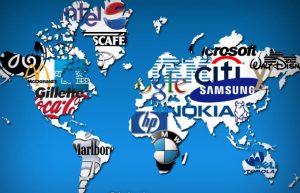
We the people have the power; but how do we use it?
post by Zerhra Erkul
The internet could be the best asset society has.
Protests are an expression of anger felt amongst individuals and are one of the best examples of communities uniting in an attempt to resolve local and global issues. They are a representation of the people’s power. With the rise of the internet age, it is easier now more than ever to find a community you feel you belong to; this allows for ideas to be spread amongst likeminded people and shines a light upon issues otherwise left in the dark, drowned out by mainstream media platforms.
But what is the best way to approach tackling global issues created by our governments and oppression? Do peaceful protests accomplish anything or is violence the only way movements can be noticed?
Many peaceful protests have been a success, accomplishing the social change which they intended. This has been happening for years, with a memorable example being Rosa Parks’ calm refusal to give up her seat to a white passenger. But how do things differ in society today? It is obvious that use of the internet is a powerful tool to get messages across and make an impact. The Zapatista struggle in Mexico is an example of rebellion against neo-liberalism, globalization and free trade regulations put in place to modernise developing countries. They operate their villages using direct democracy, autonomous to the government.
It is obvious that use of the internet is a powerful tool to get messages across and make an impact. The Zapatista struggle in Mexico is an example of rebellion against neo-liberalism, globalization and free trade regulations put in place to modernise developing countries. They operate their villages using direct democracy, autonomous to the government.
The Zapatista’s were the first informational social movement (Castells, 2005), as they used the internet to address and connect with the public. This inspired other movements to do the same.
The Global Justice Movement which arose in the 1990’s was labelled a “Network Movement” by Castells, as it grew and communicated through the use of the internet. The Global Justice Movement was fighting for an alternative form of globalization opposed to neo-liberalism, one where power was not implemented from ‘above’ but from ‘below’.
Neo-liberalism enforced many policies such as deregulation of markets and free trade, which caused many issues to emerge. Implementing free trade policies puts certain communities at a disadvantage, whilst also causing problems to the environment. An example of this is the issue with tuna fishing nets, which cause the accidental death of dolphins that become entangled. It was claimed that enforcing safety restrictions to avoid putting dolphins at risk would interfere with free trade, and contradict the idea of it being limitless in any way. This demonstrates that neo-liberalism impacts many groups negatively.
Occupy was a significant idea that arose from the Global Justice Movement. It involved crowds of people “occupying” famous landmarks within cities and peacefully protesting for social change, a recognisable event being Occupy Wall Street. Castells saw these protests as a reflection of the people’s anger being transformed into hope for a better world (Castells, 2005).
Following these movements and use of digital platforms, Indy-pendent media rose, controlled by the people and free from government influence. Indy-media poses a major threat to officials (Juris, 2005). The peaceful march in Italy to challenge corporate globalization and respond to the murder of a young Italian activist was attacked by the Italian police and broadcast via social media by amateurs using mobile devices. Following this, Juris reported that the media centre was invaded, and data and hardware was destroyed by these officials (Juris, 2005). This really shows that the government fear the power of the people and opposes the idea that there should be ”… doubt … the digital media [can] change the political game” (Bennett, 2010). Even if there is no immediate political change, issues are still being identified and challenged.
The internet has, therefore, become a place for communications to become more horizontal, with no large corporations involved just people to people contact. This is an essential tool for global protest as many movements are able to engage with a large audience and bring attention to issues which have been otherwise ignored for decades; such as the #MeToo movement, that exposed the unfair treatment of women in Hollywood. By use of a hashtag, the communities are easily accessible, a safe place to share personal experiences and be offered support. Although this movement does not tackle a political issue, it is a key example of the impact that the internet has on drawing attention to otherwise ignored issues within society.
However, what about the antithesis of peaceful protests? There are movements and groups which advocate and utilise violence in order to induce social change; the Black Bloc is an example of an anti-establishment protest group. They hide their identities by dressing in black and covering their face, which is similar to how you can conceal your online identity and remain anonymous; appealing to many people.
Maniacal behaviour seems to attract mainstream media attention more than peaceful protests,, yet the issues with resorting to violence are that the purpose of the cause may be lost, and certain minorities are further demonised in society.
So what works?
I believe that the growth of global protesting has been inspired by the digital age, but what does it take to be heard? Many movements such as the Black Lives Matter (BLM) have been advocating political change to things such as gun control laws for years, yet the protests for gun control laws that rose after the school shooting in Parkland achieved much more attention in a shorter amount of time.
Does this mean that the results of a protest differ depending on who benefits from the social change, and is there any hope that we the people can unite and use our power against the 1%?
The digital age is possibly our best solution to stand together, united, and fight the unjust system. We must face global social challenges together, and fight austerity and corporations.
References and further reading
Bennett, W. (2010). Information, Communication and Society. Communication Global Activism, 1.
Bethea, C. (11 April 2018). Parents and Students from Stoneman Douglas High School Take Sides in the Florida Senate Race. Retrieved 26 April 26th, 2018, from The New Yorker.
Castells, M. (2005). The Network Society. Cheltenham: Edward Elgar Publishing Ltd.
Dupuis-Déri, F. (25 August 2017). The Conversation. Retrieved 26 April 2018, from The Conversation.
Heidewald, E. (14 February 2017). Where the World Thinks Out Loud. Retrieved 26 April 2018, from Global Comment.
Juris, J. (2005). The Annals. The New Digital Media and Activist Networking within Anti-Corporate Globalization, 189-208.
Juris, J. (2005). The New Digital Media and Activist Networking within Anti-Corporate Globalization. California: Sage Publications.

0 Comments